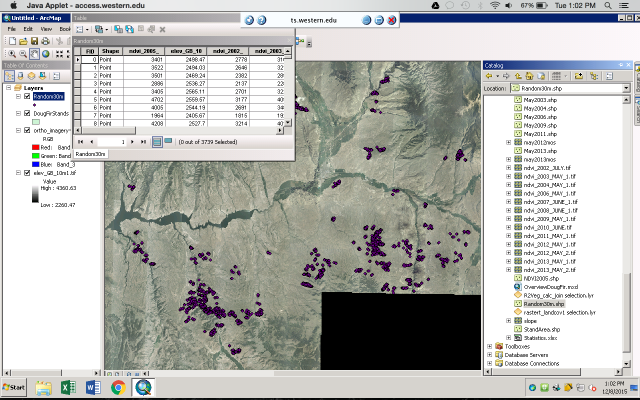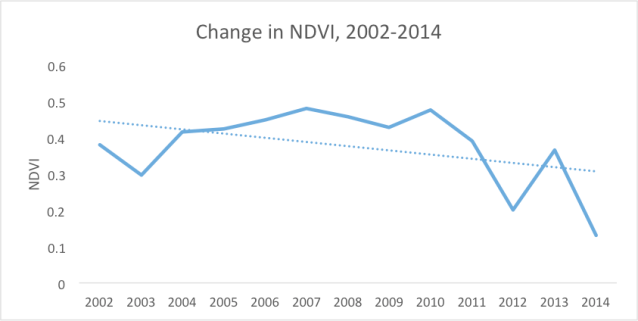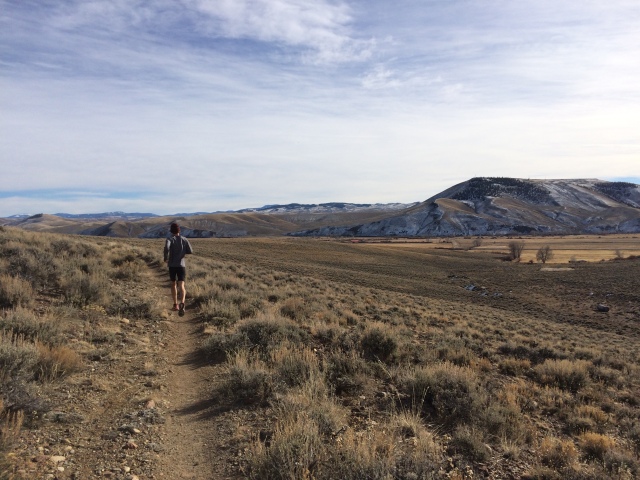Driven by necessity, not all of my current work revolves around birds. This semester, in partnership with classmate Brandon Cary, I researched forest health decline in Douglas-fir (Pseudotsuga menziesii) near Gunnison as a term project for my Forest Ecology class. While this subject actually does relate to birds, and indeed this project will feed into a grant project that I will begin next summer, it does take a peculiar turn in that we never left campus or went into the field to conduct our research.

We focused on using remotely-sensed data (“satellite imagery” for the layman) to analyze the effects of recent Douglas-fir Beetle (Dendroctonus pseudotsugae) on the health of Douglas-fir “islands” within the Gunnison Basin. We primarily used an index of forest health called Normalized Difference Vegetation Index (NDVI), which is a quantified measure of pixel’s greenness that varies between -1 and 1, with higher numbers exhibiting the highest amount of green reflectance, theoretically indicating better forest productivity.

Using ArcGIS mapping software to run our analysis, we indeed found a statistically significant decline in forest health based on NDVI values, confirming what anyone could determine if they hiked through a local stand of Douglas-fir. We also attempted to find correlations between this decline and other remotely sensed factors, such as elevation and slope, though none of these were statistically significant.

Overall, I found this research project to be inspiring due to the fact that we were able to collect an enormous amount of relevant data from the entire span of the Gunnison Basin without ever leaving my apartment. However, this is thankfully not a substitute for actual field work, which continues to be the best way to collect observations and data from the real world, leading in turn to truly ground-breaking discoveries. As such, I am currently writing a grant proposal to continue my investigations into the Douglas-fir habitat next summer, with a much greater emphasis on their associated and seldom studied bird life.

As always, if you have any comments or questions on this post or anything else, drop me a comment or an email!

Wow! This is really fantastic and engaging research!
LikeLike
In your opinion, was this an efficient means of collecting data or are questions like these better suited to field research? Was it perhaps beneficial to be able to collect this information easily with a uniform system of quantitative analysis? As an avid outdoorsman the decline of forests in the western United States seems apparent but I image it most likely helps to have this kind of data readily available.
LikeLike
David, I believe that this GIS analysis is great for getting a quick and dirty rundown of large-scale trends. If you want to look at the driving factors of these trends, or local scale studies, then I think an actual field study should be warranted. Great thoughts!
LikeLike
Pingback: Island Hopping – The Cursorial Birder
Pingback: Tree Hugging, Literally – The Cursorial Birder